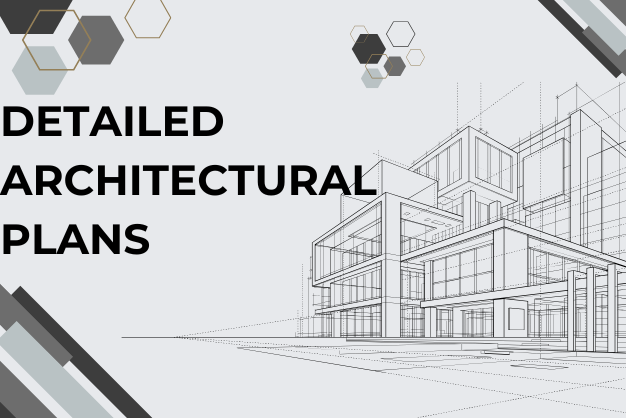Every successful business encounters challenges, whether they involve managing growth, adapting to industry changes, or resolving operational inefficiencies. Detailed architectural plans offer solutions by providing a clear and actionable roadmap for addressing these obstacles. They empower businesses to navigate complexities with confidence.
The Role of Architectural Plans in Problem-Solving
Detailed architectural plans are more than technical drawings—they are strategic tools that help businesses:
1. Address Operational Inefficiencies
Plans that incorporate workflow analysis and space optimisation ensure that every square metre is utilised effectively, reducing bottlenecks and enhancing productivity.
2. Prepare for Growth
Scalable designs anticipate future expansions, ensuring that businesses can grow without the need for frequent, costly redesigns.
3. Ensure Regulatory Compliance
Comprehensive plans incorporate building codes, safety regulations, and accessibility standards, mitigating risks of non-compliance.
4. Minimise Risks and Delays
Identifying potential challenges during the planning phase allows for proactive solutions, saving time and money during construction and operations.
Key Benefits of Detailed Architectural Plans
1. Customised Solutions
Every business has unique needs. Tailored architectural plans take these requirements into account, offering bespoke solutions that align with company goals.
2. Enhanced Collaboration
Plans serve as a communication tool between stakeholders, architects, and contractors, ensuring everyone is aligned and informed throughout the project.
3. Cost Savings
Detailed planning reduces errors and avoids unnecessary expenditures. Accurate measurements and material specifications lead to more efficient budgeting.
4. Strategic Decision-Making
With a clear visual representation of the project, businesses can make informed decisions about design, functionality, and resource allocation.
How Architectural Plans Solve Common Business Challenges
1. Optimising Workspace Layouts
Poorly designed layouts can hinder productivity and collaboration. Architectural plans that prioritise functionality and flow improve employee satisfaction and operational efficiency.
2. Adapting to Hybrid Work Models
As hybrid work becomes the norm, businesses need flexible spaces. Plans that incorporate adaptable workstations, meeting rooms, and breakout areas ensure seamless transitions.
3. Managing Complex Renovations
Renovations can be disruptive without proper planning. Detailed architectural plans minimise downtime and ensure that upgrades align with the business’s vision.
4. Sustainability Goals
Plans that integrate energy-efficient systems and sustainable materials help businesses meet their environmental objectives while reducing costs.
Steps to Create Effective Architectural Plans
1. Engage Stakeholders Early
Involve employees, managers, and contractors from the outset to gather insights and align goals. Collaborative planning ensures that all perspectives are considered.
2. Conduct Thorough Site Analysis
Understanding the existing site conditions allows architects to identify constraints and opportunities, creating a solid foundation for the design.
3. Use Advanced Design Tools
Modern software like Building Information Modelling (BIM) and virtual reality simulations enable precise planning and visualisation of the final project.
4. Regularly Review and Update Plans
As business needs evolve, architectural plans should be revisited and updated to reflect these changes, ensuring continued relevance and effectiveness.
Conclusion
Detailed architectural plans are indispensable for businesses aiming to overcome challenges and achieve long-term success. By addressing inefficiencies, supporting growth, and fostering collaboration, these plans enable businesses to navigate obstacles with clarity and purpose.
Ready to turn challenges into opportunities? Contact us today to create architectural plans tailored to your business needs.
